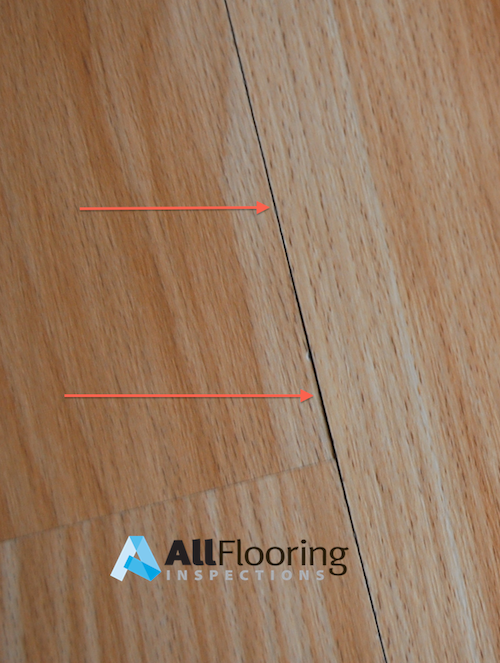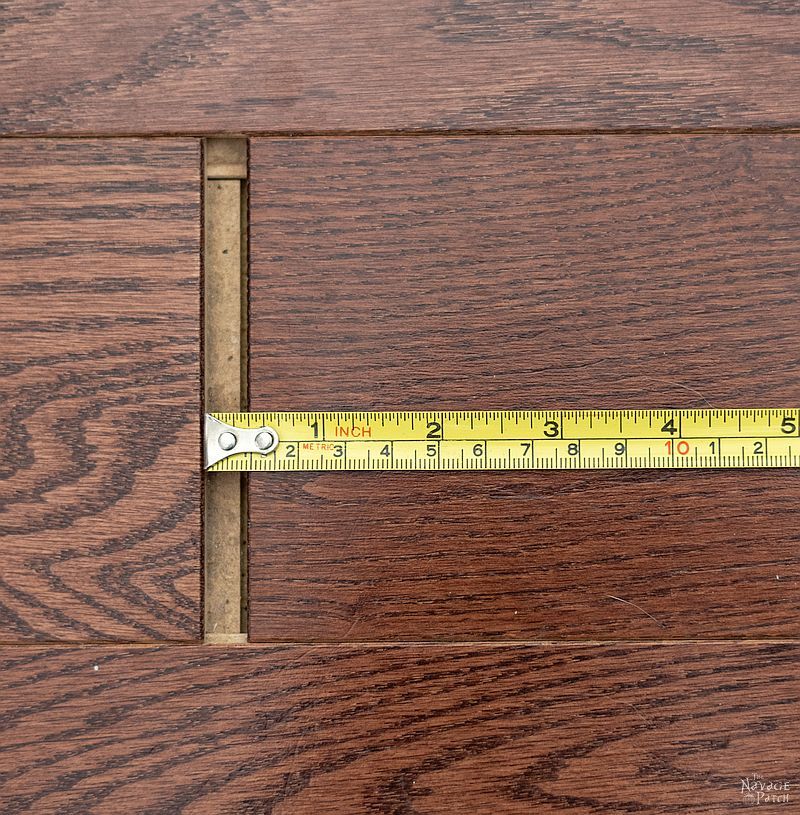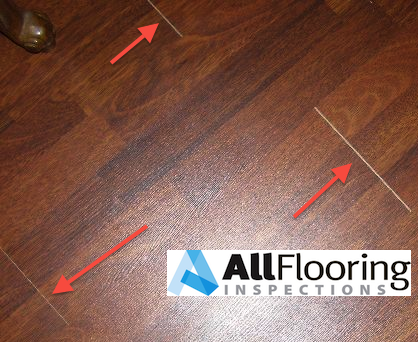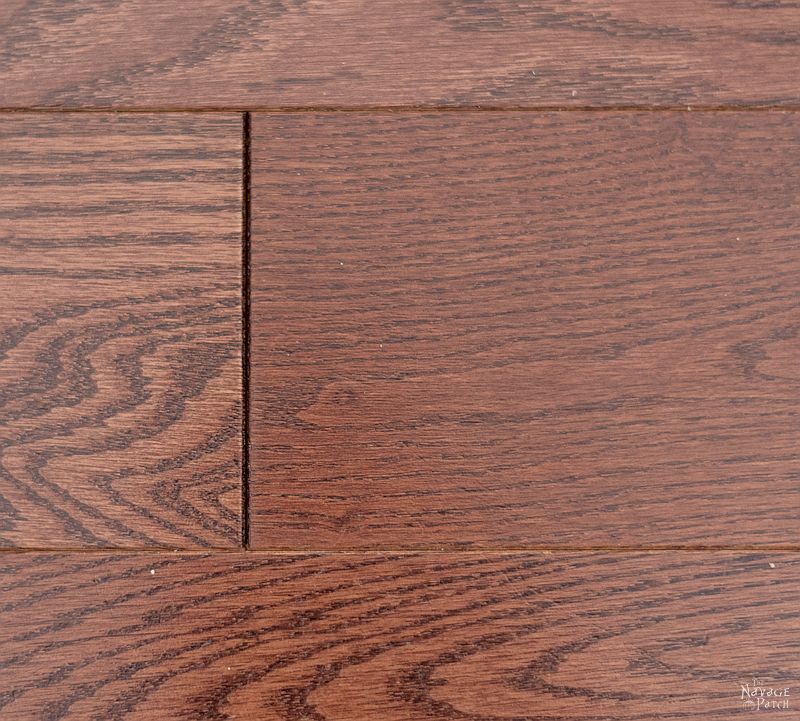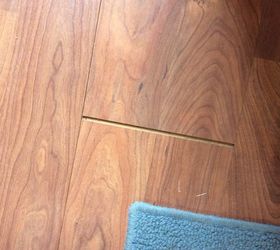Understanding the Causes of Laminate Flooring Gaps
Laminate flooring is a popular choice for homeowners due to its durability and affordability. However, one common issue that can arise with laminate flooring is gaps between the boards. These gaps not only affect the aesthetic appeal of the floor but also pose potential problems, such as trapping dirt and moisture. Let’s see the causes of laminate flooring gaps and identify the common culprits behind this issue.
- Improper Installation: One of the primary causes of laminate flooring gaps is improper installation. If the floorboards are not properly aligned and secured during installation, gaps can occur. This can happen if the installer fails to leave enough expansion space around the perimeter of the room or neglects to use spacers between the boards.
- Subfloor Issues: Another common culprit behind laminate flooring gaps is subfloor issues. If the subfloor is uneven or not properly prepared before installation, it can cause the floorboards to shift and create gaps. Uneven subfloors can result from improper leveling or the presence of debris, such as dust or debris.
- Moisture and Humidity: Moisture and humidity play a significant role in causing laminate flooring gaps. When exposed to excess moisture or humidity, laminate boards can expand and contract, leading to gaps between them. This is particularly common in areas with high humidity or rooms prone to moisture, such as bathrooms or kitchens.
- Insufficient Acclimation: Acclimation refers to the process of allowing the laminate flooring to adjust to the temperature and humidity of the room before installation. If the laminate boards are not properly acclimated, they may expand or contract after installation, resulting in gaps. It is crucial to follow the manufacturer’s recommendations for acclimation time and conditions.
- Wear and Tear: Over time, wear and tear can also contribute to the development of gaps in laminate flooring. Heavy foot traffic, furniture movement, and impacts can cause the boards to shift and create gaps. Regular maintenance and prompt repairs can help minimize the impact of wear and tear on the flooring.

Tips and Tricks for Preventing Laminate Flooring Gaps
Prevention is key when it comes to avoiding laminate flooring gaps. By following some simple tips and tricks, you can keep your floors tight and seamless. Below are some effective methods to prevent laminate flooring gaps and maintain a beautiful floor.
Proper Installation: To prevent laminate flooring gaps, it is crucial to ensure proper installation. Hire a professional installer or follow the manufacturer’s installation guidelines carefully. Leave sufficient expansion space around the perimeter of the room and use spacers between the boards during installation.
Acclimation: Before installation, allow the laminate flooring to acclimate to the room’s temperature and humidity. This will minimize the risk of expansion or contraction after installation, reducing the chances of gaps. Follow the manufacturer’s recommended acclimation time and conditions.
Subfloor Preparation: Prepare the subfloor properly before installing laminate flooring. Ensure it is level, clean, and free from debris. Use a moisture barrier if necessary to protect against moisture-related issues, which can lead to gaps.
Maintain Optimal Humidity Levels: Keep the humidity levels in your home within the recommended range for laminate flooring. Use a dehumidifier in areas with high humidity, such as bathrooms or basements. Avoid excessive moisture exposure, such as spills or leaks, that can lead to gaps.
Regular Maintenance: Perform regular maintenance on your laminate flooring to prevent gaps. Sweep or vacuum regularly to remove dirt and debris that can cause boards to shift. Use felt pads on furniture legs to prevent scratching and minimize movement that can lead to gaps.
Avoid Excessive Weight: Avoid placing heavy objects or furniture directly on your laminate flooring, as this can cause the boards to shift and create gaps. Use furniture coasters or pads to distribute the weight evenly and prevent damage to the floor.
Repairing Laminate Flooring Gaps
Despite our best efforts, laminate flooring gaps can still occur. When faced with this issue, it is essential to address it promptly to maintain the integrity and aesthetics of your floor. Here are some simple solutions for repairing laminate flooring gaps and achieving a flawless finish.
Fillers and Sealants: One of the most common and effective methods for repairing laminate flooring gaps is using fillers and sealants. These products are specifically designed to fill in the gaps and create a seamless appearance. Choose a filler or sealant that matches the color of your laminate flooring for the best results.
DIY Gap Repair: If the gaps in your laminate flooring are small, you may be able to repair them yourself using simple household items. One method involves using a mixture of wood glue and sawdust to fill in the gaps. Apply the mixture to the gaps using a putty knife, smooth it out, and let it dry before sanding and refinishing the area.
Board Replacement: For larger gaps or more significant damage, it may be necessary to replace the affected boards. This requires careful removal of the damaged boards and installation of new ones. Consult a professional if you are unsure about this process or if the damage extends beyond your DIY capabilities.
Professional Repair: If you are not confident in your ability to repair laminate flooring gaps yourself or if the damage is extensive, it is best to seek professional help. Professional flooring contractors have the expertise and tools to repair gaps seamlessly and ensure a flawless finish.
Preventive Measures: Once you have repaired the gaps in your laminate flooring, it is crucial to take preventive measures to avoid further issues. Follow the tips and tricks mentioned earlier in this article to prevent future gaps. Regularly inspect your flooring for any signs of damage or gaps and address them promptly.
The Role of Humidity in Laminate Flooring Gaps
Humidity plays a significant role in the development of laminate flooring gaps. Understanding the impact of humidity and implementing proper moisture management techniques is crucial for a lasting and problem-free installation. Let’s talk about the role of humidity in laminate flooring gaps and discuss effective strategies for managing moisture.
Expansion and Contraction: Laminate flooring is susceptible to expansion and contraction when exposed to changes in humidity levels. High humidity causes the boards to absorb moisture and expand, while low humidity leads to drying and contraction. These changes can result in gaps between the boards.
Recommended Humidity Levels: To prevent laminate flooring gaps, it is essential to maintain optimal humidity levels in your home. The recommended humidity range for laminate flooring is typically between 40% and 60%. Use a hygrometer to monitor the humidity levels and adjust accordingly.
Use of Dehumidifiers: In areas with high humidity, such as bathrooms or basements, consider using dehumidifiers to reduce moisture levels. Dehumidifiers help maintain a consistent humidity range, minimizing the risk of laminate flooring gaps. Empty and clean the dehumidifier regularly for optimal performance.
Proper Ventilation: Proper ventilation is crucial in managing humidity levels and preventing gaps in laminate flooring. Ensure that your home has adequate ventilation, especially in areas prone to moisture, such as kitchens and bathrooms. Use exhaust fans or open windows to promote airflow and reduce humidity.
Moisture Barriers: In areas where moisture is a concern, such as basements or on concrete subfloors, consider using moisture barriers. Moisture barriers, such as plastic sheeting or underlayment with vapor barriers, create a protective layer that prevents moisture from reaching the laminate flooring.
Regular Maintenance: Regular maintenance is essential for managing moisture and preventing laminate flooring gaps. Clean up spills promptly, and avoid leaving standing water on the floor. Use a damp mop or microfiber cloth for routine cleaning, ensuring that excess moisture is not left on the surface.
Maintenance and Care for Laminate Flooring
Proper maintenance and care are essential for preserving the beauty and longevity of your laminate flooring. By implementing a regular maintenance routine and following simple care guidelines, you can ensure a gap-free and beautiful floor. Below are effective maintenance and care tips for laminate flooring.
Regular Cleaning: Regular cleaning is crucial for preventing dirt and debris from accumulating and causing laminate flooring gaps. Sweep or vacuum the floor regularly to remove loose dirt and dust. Use a damp mop or microfiber cloth with a mild cleaning solution specifically designed for laminate flooring. Avoid excess moisture, as it can cause the boards to expand and create gaps.
Avoid Abrasive Cleaners: When cleaning your laminate flooring, avoid the use of abrasive cleaners or harsh chemicals. These can damage the protective top layer and make the floor more susceptible to gaps. Stick to gentle, non-abrasive cleaners recommended by the manufacturer.
Avoid Excessive Moisture: Excess moisture is one of the main culprits behind laminate flooring gaps. Avoid excessive moisture exposure by using doormats at entryways to trap dirt and moisture from shoes. Place mats or rugs in areas prone to spills, such as the kitchen or bathroom, to protect the flooring. Wipe up any spills immediately to prevent moisture from seeping into the boards and causing them to expand.
Trim Pet’s Nails: If you have pets, make sure to regularly trim their nails. Long claws can scratch and damage the protective layer of the laminate flooring, making it more susceptible to gaps. Keep your pets’ nails short to prevent any potential damage.
Use Protective Pads for Heavy Furniture: When moving heavy furniture, use protective pads or sliders to prevent dragging and scratching the laminate flooring. Lift the furniture instead of dragging it to avoid any unnecessary stress on the boards, which can lead to gaps.
Avoid Wet Mopping: While laminate flooring can handle damp mopping, it is important to avoid wet mopping as excessive moisture can cause the boards to swell and create gaps. Instead, use a slightly damp mop or microfiber cloth to clean the floor. Ensure that the mop or cloth is well wrung out to prevent excess moisture from seeping into the boards.
Regular Inspections: Perform regular inspections of your laminate flooring to check for any signs of gaps, damage, or wear. Look for any boards that may be shifting or showing signs of separation. If you notice any issues, address them promptly to prevent further damage and maintain a gap-free floor.
Ways to Close Gaps in Laminate Flooring
Best way to deal with gaps between laminate floor panels
How to Fix Floating Floor Gaps DIY Floor Gap Fixer The Navage
How do you fix the gap in laminate flooring? Hometalk
Gaps in Laminate Flooring All Flooring Inspections
How to Close Gaps in Laminate Flooring
Related Posts:
- Laying Laminate Flooring Over Hardwood
- Homemade Laminate Floor Cleaner
- Laminate Flooring Ideas For Kitchen
- Installing Laminate Flooring On Stairs
- How To Shine Laminate Floors Naturally
- Rustic Pine Laminate Flooring
- Mosaic Tile Effect Laminate Flooring
- Laminate Flooring For Commercial Use
- Laminate Floor Around Toilet
- Laminate Flooring Transition Strips Concrete
